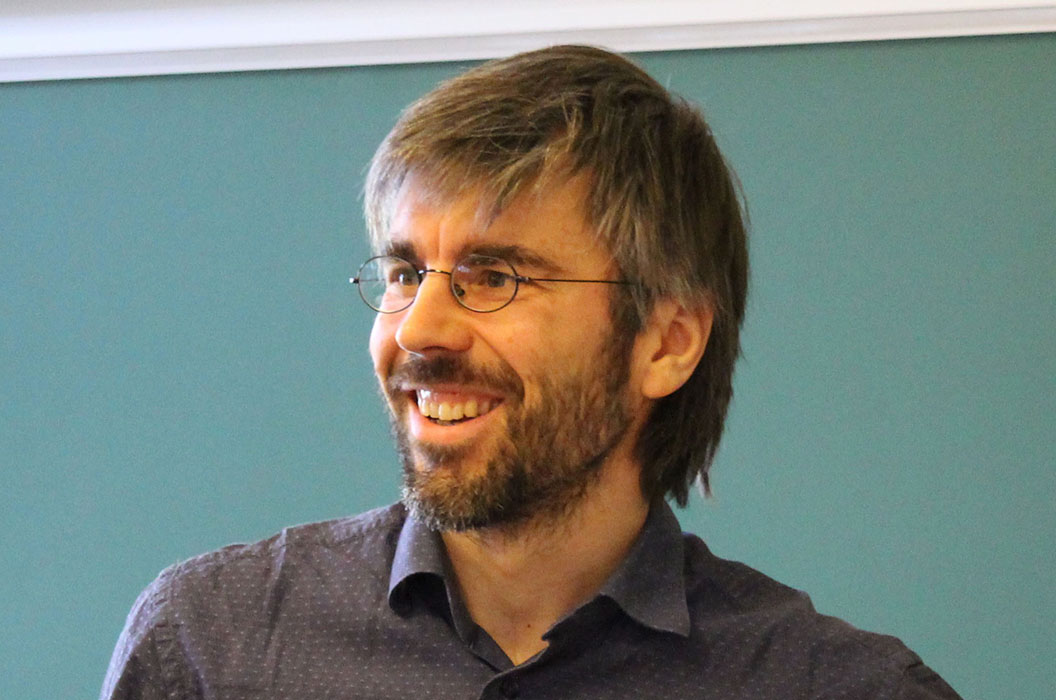 Scientific activity
Scientific activity
Slava Rychkov proposes a rigorous approach to the Renormalization group
Critical phenomena permeate physics and Slava Rychkov has long been interested in tackling their complexity. After having achieved very encouraging results with the conformal bootstrap, he has recently gone back to its complementary, rival method when dealing with criticality: the Renormalization group. His aim is to give new life to the philosophy behind its original formulation, and to move away from the many approximations and truncations that characterize its most popular implementations.
To do that, he teamed up with two mathematical physicists, Alessandro Giuliani and Vieri Mastropietro. Their collaboration, which blends the rigor of mathematical physics with a focus on applying it to physical systems of actual interest, resulted in a paper, recently made available on the Journal of High Energy Physics. By showing in detail an example of exact application of the Renormalization group, they hope to spark a renewed interest in its rigorous implementation and unveil its unexploited potential.
Introduced in the 1960s, the Renormalization group was mainly developed by Kenneth Wilson, who in 1982 was awarded the Nobel Prize for his contributions. It is a beautiful, complex apparatus suggesting how the collective behavior observed in critical systems can arise from microscopic interactions. The Renormalization group has played a crucial role in the study of phase transitions and the understanding of universality which emerges close to the critical temperature, at which the transition happens.
But if on one hand the Renormalization group seems to qualitatively capture the physics of phase transitions, on the other hand the quantitative results it provides are of limited accuracy: its complexity has led to a range of approximations that have failed to converge to stable physical solutions, thus leading to a general disillusion in the physics community, against the hope to ever solve it exactly.
Convinced that Wilson was right, and that the problem with the Renormalization group so far has been that nobody has yet been able to find a stable implementation of Wilson’s vision, Slava Rychkov, Alessandro Giuliani and Vieri Mastropietro ventured in a mission to develop a new, rigorous implementation of the Renormalization group and apply it to relevant physical problems.
They started working together in 2017, when Slava Rychkov met Alessandro Giuliani at a conference organized by the Accademia dei Lincei, in Rome. At the time Professor Rychkov had already obtained very promising results with his conformal bootstrap method, but had long been convinced that the rigorous use that mathematicians had been able to make meant that the Renormalization group still had a lot to say. Alessandro Giuliani, a mathematical physicist with a deep interest in critical phenomena, on his side, had already a long history of collaborating with Vieri Mastropietro on an exact approach to the Renormalization group.
In their paper, they apply the Renormalization group to a new, simple model to obtain a self-contained, exact result. Their work shows that the many approximations that physicists have applied over the years to get to grips with the Renormalization group are certainly useful, but not indispensable.
This result opens the way to further work and might constitute an important step towards solving problems that have long remained open. One that has puzzled physicists for a century now, and that Slava Rychkov has already set his eye on, is the 3-dimensional Ising model. A hundred years after the model was first formulated, and more than 75 years after Lars Onsager found an analytical solution in two dimensions, this paper lightens up the hope that by applying Wilson’s philosophy a solution to the 3-dimensional model could be expressed as a convergent series whose terms it will be possible to compute.
The collaboration between Slava Rychkov, Alessandro Giuliani and Vieri Mastropietro proves that the alliance between mathematicians and physicists can lead to a deeper, more profound understanding of nature’s laws, thus perfectly reflecting IHES’ founding spirit.



